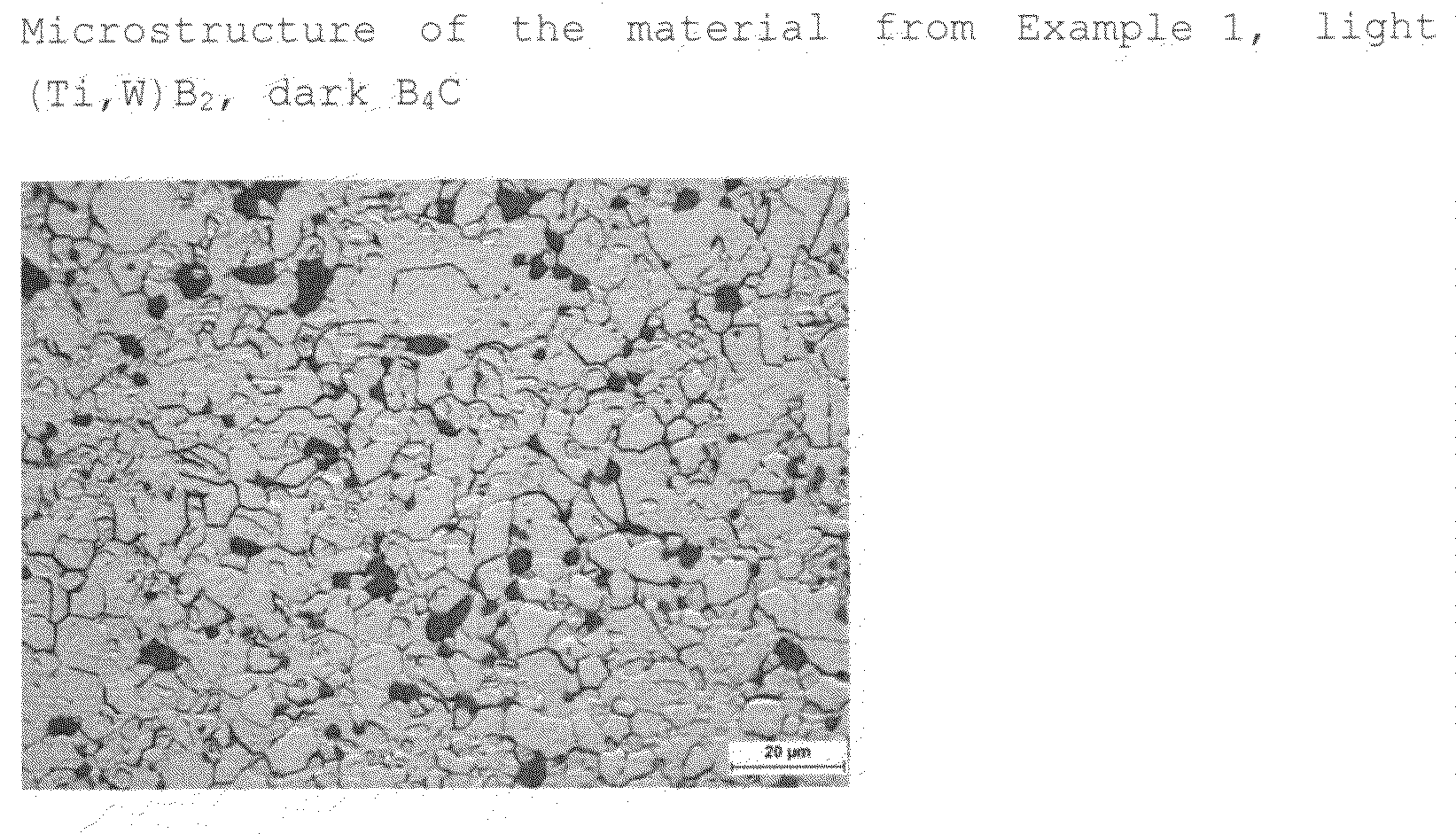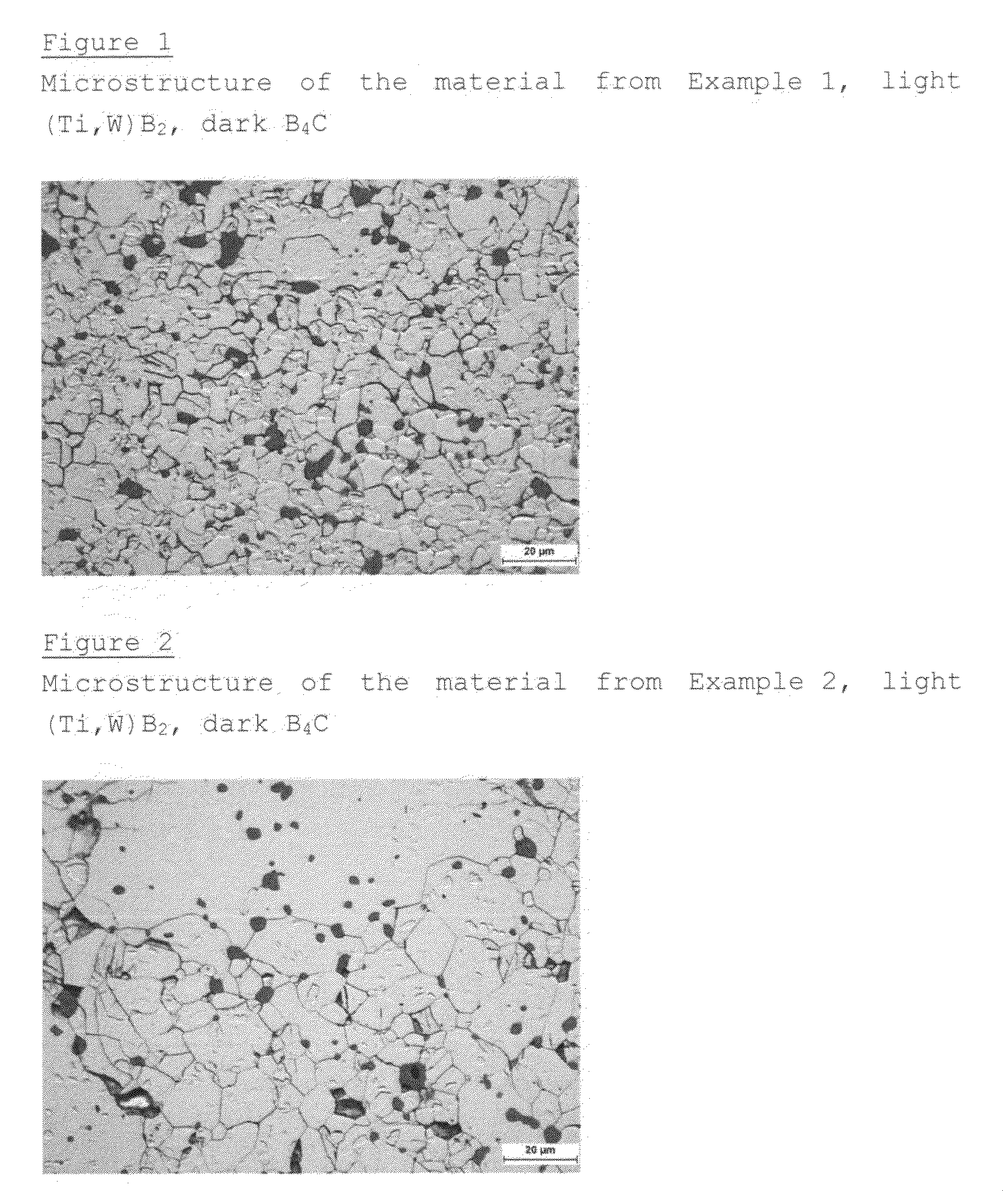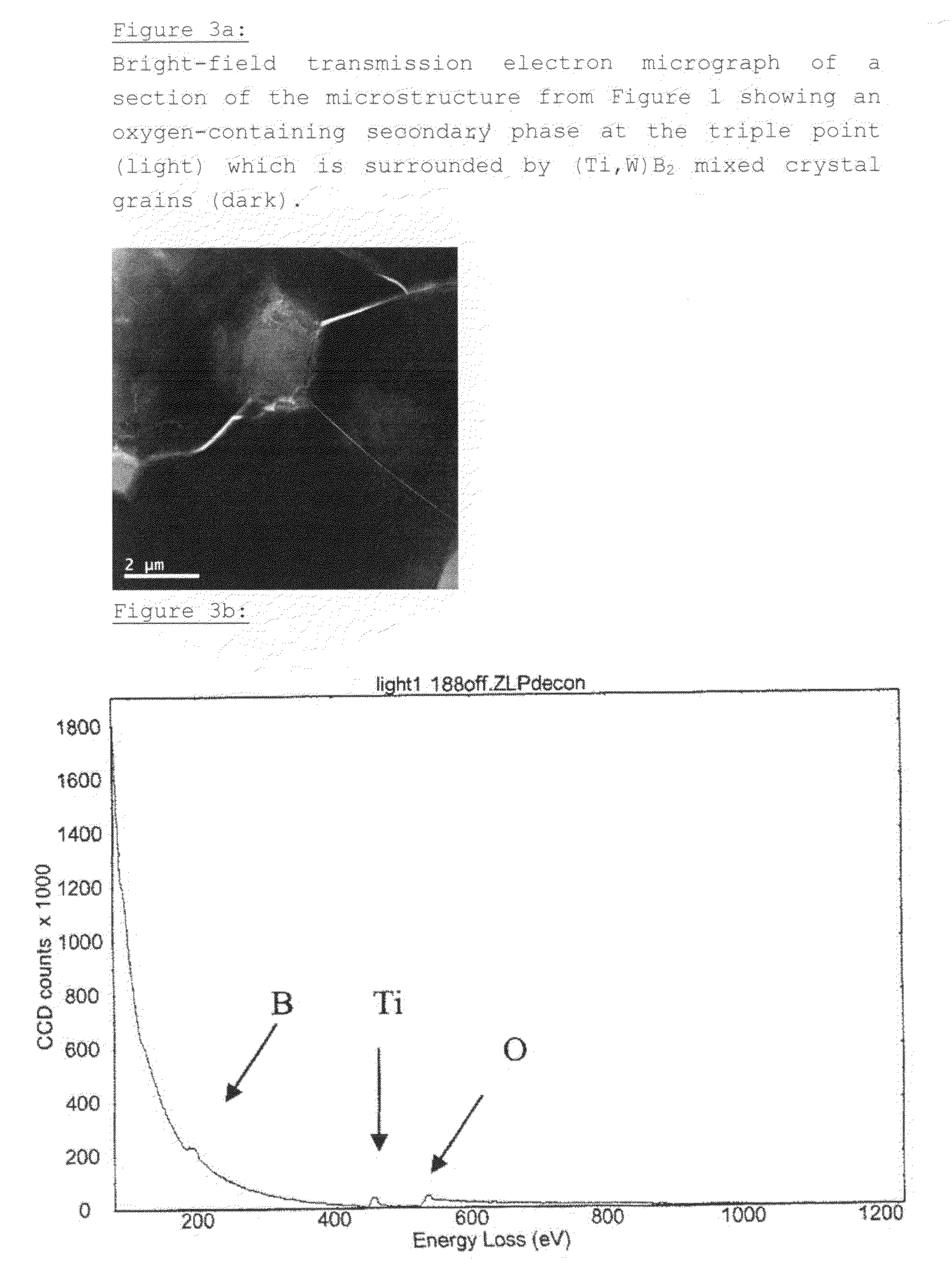Sintered Wear-Resistant Boride Material, Sinterable Powder Mixture, for Producing Said Material, Method for Producing the Material and Use Thereof
- Summary
- Abstract
- Description
- Claims
- Application Information
AI Technical Summary
Benefits of technology
Problems solved by technology
Method used
Image
Examples
example 1
[0054]450 g of TiB2 powder (d50=2 μm; 1.7% by weight of oxygen, 0.15% by weight of carbon, 0.077% by weight of Fe), 30 g of tungsten carbide (d502O3 (boehmite as starting material) are dispersed together with 10 g of polyvinyl alcohol having an average molar mass of 1500 as binder and 20 g of stearic acid as pressing aid in aqueous solution and spray dried. The granular spray-dried material is uniaxially pressed at 1000 bar to give green bodies. The total oxygen content of a carbonized green body is 2.7%. The green bodies are heated under reduced pressure to 2020° C. at 10 K / min and maintained at the sintering temperature for 45 minutes. Cooling is carried out under Ar with the heating power switched off.
[0055]The sinter density of the samples obtained is 98% of the theoretical density.
[0056]An optical photomicrograph of the microstructure is shown in FIG. 1.
[0057]The resulting microstructure comprises a (Ti,W)B2 mixed crystal matrix, finely divided particulate B4C, a Ti—Al—B—O phas...
example 2
[0059]450 g of TiB2 powder (d50=2 μm; 1.7% by weight of O, 0.15% by weight of C, 0.077% by weight of Fe), 30 g of WC (d504C (d50=0.7 μm) and 2 g of Al2O3 (boehmite as starting material) are dispersed together with 10 g of polyvinyl alcohol having an average molar mass of 1500 as binder and 20 g of stearic acid as pressing aid in aqueous solution and spray dried. The granular spray-dried material is cold-isostatically pressed at 1200 bar to give green bodies. The total oxygen content of a carbonized green body is 2.7%. The green bodies are heated under reduced pressure to 2060° C. at 10 K / min, and maintained at the sintering temperature for 45 minutes. Cooling is carried out under Ar with the heating power switched off.
[0060]The sintered density of the specimens obtained is 98.7% of the theoretical density.
[0061]An optical photomicrograph of the microstructure is shown in FIG. 2.
[0062]The resulting microstructure comprises a (Ti,W)B2 mixed crystal matrix, finely divided particulate B...
example 3
[0063]436 g of TiB2 powder (d50=2 μm; 1.7% by weight of O, 0.15% by weight of C, 0.077% by weight of Fe), 44 g of WC (d502O3 (boehmite as starting material) are dispersed together with 10 g of polyvinyl alcohol having an average molar mass of 1500 as binder and 20 g of stearic acid as pressing aid in aqueous solution and spray dried. The granular spray-dried material is cold-isostatically pressed at 1200 bar to give green bodies. The green bodies are heated to 2020° C. at 10 K / min, and maintained at the sintering temperature for 45 minutes. Cooling is carried out under Ar with the heating power switched off.
PUM
| Property | Measurement | Unit |
|---|---|---|
| Grain size | aaaaa | aaaaa |
| Grain size | aaaaa | aaaaa |
| Temperature | aaaaa | aaaaa |
Abstract
Description
Claims
Application Information
 Login to View More
Login to View More - R&D
- Intellectual Property
- Life Sciences
- Materials
- Tech Scout
- Unparalleled Data Quality
- Higher Quality Content
- 60% Fewer Hallucinations
Browse by: Latest US Patents, China's latest patents, Technical Efficacy Thesaurus, Application Domain, Technology Topic, Popular Technical Reports.
© 2025 PatSnap. All rights reserved.Legal|Privacy policy|Modern Slavery Act Transparency Statement|Sitemap|About US| Contact US: help@patsnap.com



